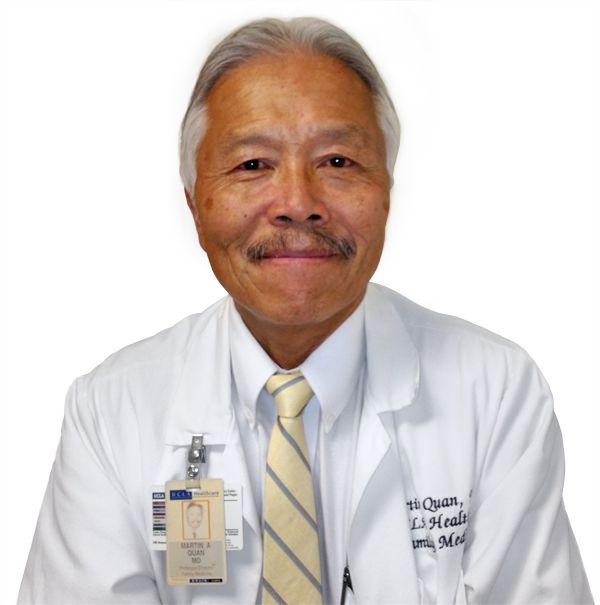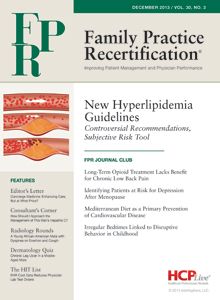Publication
Article
Family Practice Recertification
Concierge Medicine: Enhancing Care, But at What Price?
Author(s):
I find myself longing for the days when bags flew free on all airlines and when practices treated patients the same regardless of their willingness to pay an extra fee.

Martin Quan, MD
Editor-in-Chief
Concierge medicine is signified by a contractual arrangement where a patient directly pays a physician a flat monthly or annual retainer fee in return for enhanced personalized medical services extending beyond the customary service covered by traditional health insurance.
The roots of this payment model are traceable to 1996, when a team physician of the Seattle Supersonics began to offer the same special services afforded to NBA players in his practice to patients from the general public for a fee. In the years that followed, the concept of concierge medicine evolved from a mere curiosity to a movement picking up steam.
The evolution has been fueled, at least in part, by the financial squeeze imposed on primary care physicians stemming from inadequate insurance reimbursement for their services. This has pressured physicians to assume larger patient workloads, translating into longer appointment and in-office wait times, hurried office visits, and an overall less-than-satisfying experience for both physicians and their patients.
Concierge medicine has emerged as an attractive alternative to the traditional insurance-based model, as it is the source of a new stream of revenue in addition to — or in some settings, in place of — insurance payment that has made it financially possible for physicians to reduce their patient loads and practice with a more personalized, patient-centered style unencumbered by time and financial constraints.
Over the past decade, an increasing number of primary care practices have turned to this payment model. In 2012, the American Academy of Private Physicians (AAPP) reported there were 4,400 concierge doctors in the US, and that figure continues to the rise. For many of those practices, the concierge model has helped restore a doctor-patient relationship fractured by “conveyor belt” medicine and the growing commercialization of medical care.
In addition to freeing physicians from time demands, excessive paperwork, and practice restrictions imposed by third-party payers, concierge medicine allows physicians to be more fairly compensated for the services they provide in an increasingly complex healthcare system. In return for the additional fees paid, patients benefit from an assortment of enhanced services, including more same-day openings for appointments, longer face-to-face time with their physicians, a less hurried appointment, a greater focus on preventive medicine, and better after-hours access to their physicians, such as 24-hour access by phone, e-mail, text message, or pager.
Though concierge medicine was previously associated exclusively with primary care practices, a new wrinkle has been its entry into subspecialty practices. Such practices have developed a concierge model featuring a tiered menu of services dependent on the additional fees patients agree to pay.
For example, one West Coast cardiology practice currently offers an enhanced access plan based on the added annual fee the patient chooses to pay on top of customary healthcare costs:
- $0 for “basic status”: usual service with nurses and mid-level practitioners being primarily responsible for communications
- $500 for “select status”: access to “priority appointments and prompt notification of non-urgent test results”
- $1,800 for “premier status”: “select” services plus priority scheduling of diagnostic tests and direct e-mail and phone communications with their personal cardiologist
- $7,500 for “concierge status”: “premier” services with 24-hour page, e-mail, and cell phone access to their personal cardiologist, plus emergency night and weekend availability.
In primary care circles, a noteworthy option is the Direct Primary Care (DPC) model. In this model, practices charge patients a monthly fee in exchange for 24-hour access to a broad range of both comprehensive and preventive primary care services, which eliminates the insurance middleman altogether as it relates to payment for primary care services. Although DPC practices do not accept insurance, they generally encourage patients to have a health plan to cover hospitalization and other high-cost medical services utilized outside of the practice.
Proponents of concierge medicine argue that it represents a more financially viable and attractive primary care model that holds the potential for increasing the number of new physicians entering primary care; enables the provision of patient-centered care resulting in enhanced patient satisfaction, adherence, and improved outcomes; and fosters a greater focus on preventative services and wellness. However, detractors of the model cite the creation of a tiered system of healthcare based on patients’ ability to pay with possible abandonment of patients unwilling or unable to participate. They also argue that more widespread use of the model would impose a greater service and financial burden on non-concierge practices.
So, is concierge medicine a good thing? With its limited penetration into the market, it is hard to say. Given the shortage of primary care doctors and the rising demand surely to come with the Affordable Care Act (ACA) coverage expansion, it is hard to argue in the short-term that such a practice model wouldn’t aggravate the problem, particularly if it were to become more widespread. On the other hand, if the growth of the concierge model were to serve as the linchpin for needed reform in our dysfunctional healthcare system and result in a greater premium placed on primary care, then it would be a good thing.
In the interim — and at the risk of being accused of nostalgic professionalism — I’ll suffice it to say that I find myself longing for the days when bags flew free on all airlines and when practices treated patients the same regardless of their willingness to pay an extra fee.
Martin Quan, MD
Editor-in-Chief
Martin Quan, MD, is Professor of Clinical Family Medicine and Director of the Office of Continuing Medical Education at the David Geffen School of Medicine at UCLA. He is also a member of the Education Advisory Board and consultant to the Committee on Continued Professional Development of the California Academy of Family Physicians and a member of the Kidney Learning System Advisory Board of the National Kidney Foundation. In the past, Quan has served as Program Director of the UCLA Family Practice Residency Program, Co-Director of the UCLA Pre-Doctoral Program in Family Practice, Editor-in-Chief of Clinical Cornerstone, and Vice Chair of the Residency Review Committee in Family Practice for the Accreditation Council for Graduate Medical Education (ACGME).






